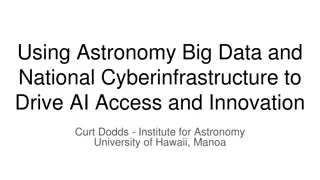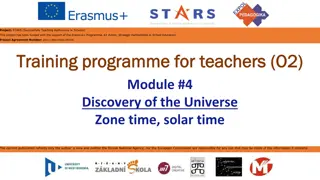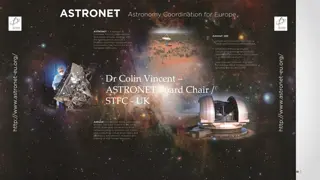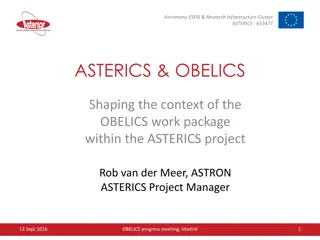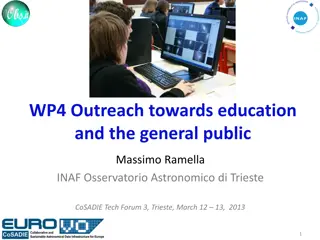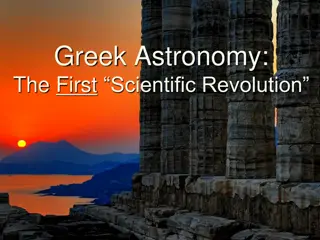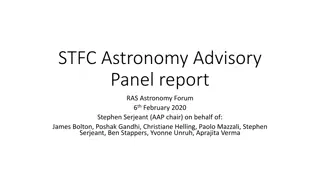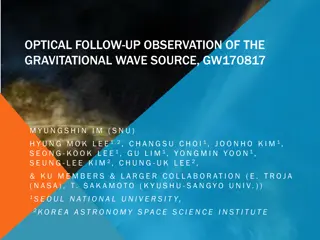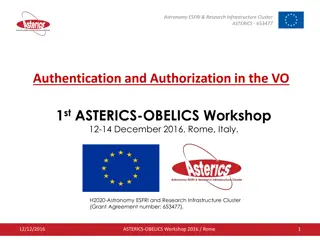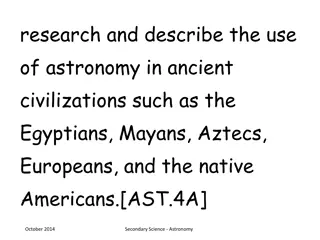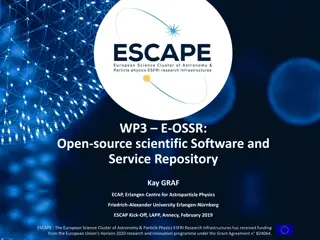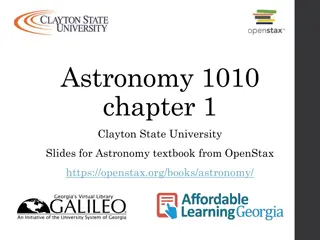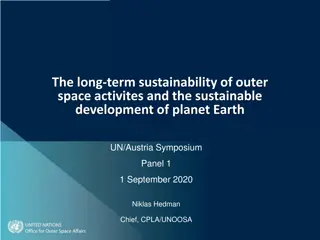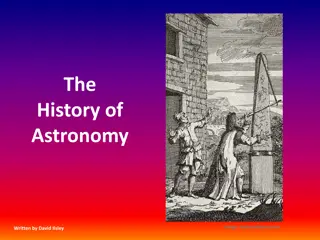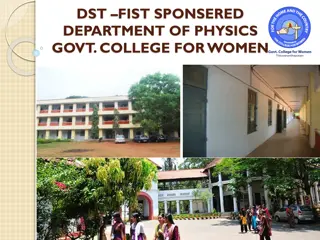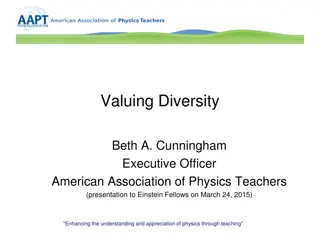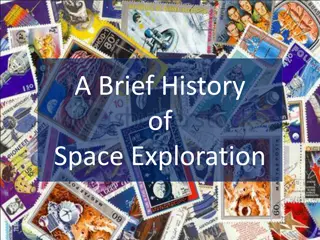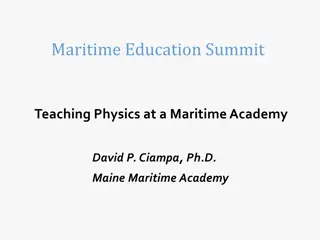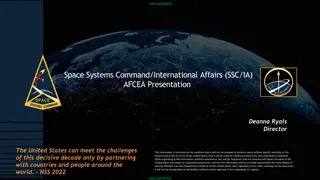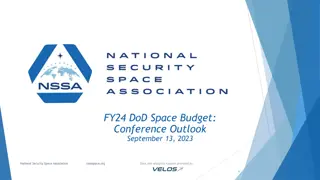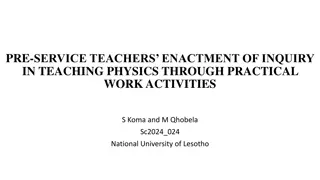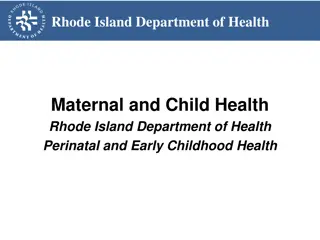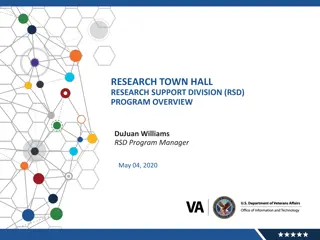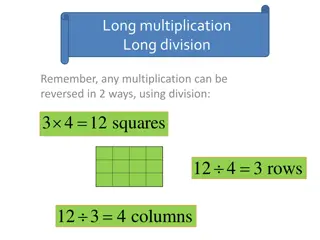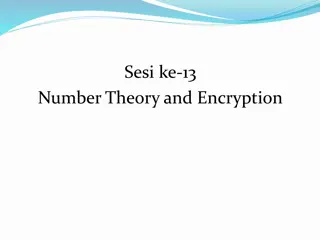Division of Astronomy and Space Physics Overview: Research and Teaching Programs
Division of Astronomy and Space Physics, in cooperation with the Swedish Institute of Space Physics (IRF), focuses on researching topics such as the first stars and galaxies, re-ionization of the Universe, and more. With distinct but complementary areas of expertise, the division offers programs in Observational Astrophysics, Theoretical Astrophysics, and Space & Plasma Physics. They also engage in undergraduate teaching, instrument development, and have a substantial teaching load. However, reliance on external funding for salaries and matching infrastructure with international projects are identified as challenges.
Download Presentation

Please find below an Image/Link to download the presentation.
The content on the website is provided AS IS for your information and personal use only. It may not be sold, licensed, or shared on other websites without obtaining consent from the author. Download presentation by click this link. If you encounter any issues during the download, it is possible that the publisher has removed the file from their server.
E N D
Presentation Transcript
Division of Astronomy and Space Physics In cooperation with the Swedish Institute of Space Physics (IRF)
Astronomy & Space Physics: Research Profiles The first stars & galaxies, re-ionization of the Universe Gaia: star survey of our galaxy ESO VLT and E-ELT instrumentation for studying stars and exoplanets Computations of micro-physical data Hydrodynamic models of stars & stellar winds Comparison with observations of evolved stars (ALMA & infrared) Stars and exoplanets Stellar magnetic fields Milky Way Rosetta Cassini PI Jupiter Icy Moons (ESA Cosmic Vision)
Astronomy & Space Physics: Overview Three Programs Distinct but complementary areas of expertise Several common science goals Shared resources Program Observational Astrophysics Program Theoretical Astrophysics stars & galaxies stellar young stars stellar magnetism exo-planets instrumentation evolved stars stellar winds origin of elements cosmic dust atmospheres the sun & solar-type stars 32 scientists at Astronomy and Space Physics solar system planets, comets plasma theory & simulations space plasma observations solar wind - planet interaction satellite instruments Staff Researchers Program Space & Plasma Physics PhD students 2(1) professors, 7(1) lecturers, 6(2) researchers, 14(5) PhD students, 3 long-term visitors Visitors
Division Economy (2016) University funding (11 MSEK) External funding (15 MSEK) Theoretical astrophysics Observtional astrophysics Space & plasma physics Undergraduate teaching Theoretical astrophysics Observational astrophysics Instrument development + access to infrastructures: ESO, ESA, SNIC, External funding pays some salaries, project costs and overhead. IRF has its own budget for research. Problem: we have to rely too much on external funds for salaries. Problem: local infrastructure does not match the ambitions of international projects.
Division has a substantial teaching load Division specific courses 5 of the courses are taught by IRF staff. IRF staff also supervises PhD students and undergraduate student projects Bachelor level: 3 courses 10- 40 students PhD students also take part in undergraduate teaching, mostly as course assistants Master level: 10 5 50 students Popular/introductory: 5 Some of these attract many students and significant income, 40 90 students. They also bring students to Astronomy PhD education PhD studies include an equivalent of one full year of course work. Each PhD student has an individual plan of studies 5 general Physics courses Weakness: No real Astronomy bachelor program. E.g., Mechanics. These have many students, often from the Engineering programs, and bring in most of our teaching income. With up to 130 students
Scientific Strategy and Recruitment Dynamic research groups with theoretical and observational expertise not restricted by Program or Division boundaries. Broad international announcement of positions (60-90 applicants for a PhD, 30-60 for postdoc, and 20-50 for lecturer). Long-term funding and generation shift analysis in connection with recruitments. Previous KoF evaluations were instrumental in selecting directions and avoiding subcritical projects. Problem: complex University procedures, often involving non-specialists, make recruitment slow and inefficient. Problem: lack of control/selection steps in the existing tenure track system.
Our Perception of Administration Excellent science and teaching Scientists with research goals and teaching Division head, council, program professors, PhD program chair Economic oversight, division of duties, weekly info Initiatives, arguments against excessive centralisation (Excessive) unification, homogenisation and centralisation Department: board, head, administration, common resources, coordination of education and PhD training Reports, requests, proposals Regulations, money, strategy, joint initiatives, inquiries Faculty: teaching, recruiting, administration, strategy
Administrative Processes Program professors and Division Head define the research strategy, and defend it at various levels at the Department. Program resources consist of faculty block grant and Division teaching income. External (personal) grants give freedom to pursue research, and occasionally hire PhD students and postdocs. Head of Division has a mainly administrative role. Division council is an advisory body (meets monthly, minutes distributed). Informal staff meetings weekly. PhD studies include several quality control mechanisms. Department guidelines have been modelled after astro-space. Strength: We receive good administrative support in the Department. Weakness: Few are willing to take on administrative duties for the Department; such are seen as a one-way street. Weakness: Central administration is becoming harder to reach.
Visibility in society Strength: Division has a very active relationship with the press/radio/TV and general public/schools. Most questions sent to the Department end up at our Division. Strength: Introductory Astronomy courses attract potential astronomers and also connect to the general public. Weakness: This is not quite the kind of connection that the Government likes to fund and the University favours.
Astronomy & Space Wish List 1. University research grants are needed to smooth the variations in external funding. 2. Clear tenure-track system with several control points is urgently needed. 3. University support of experimental research is crucial to secure UU participation in large international projects. 4. A fully-fledged Bachelor program, with a sufficient curriculum and a project in Astronomy, is needed to attract Astronomy students.



